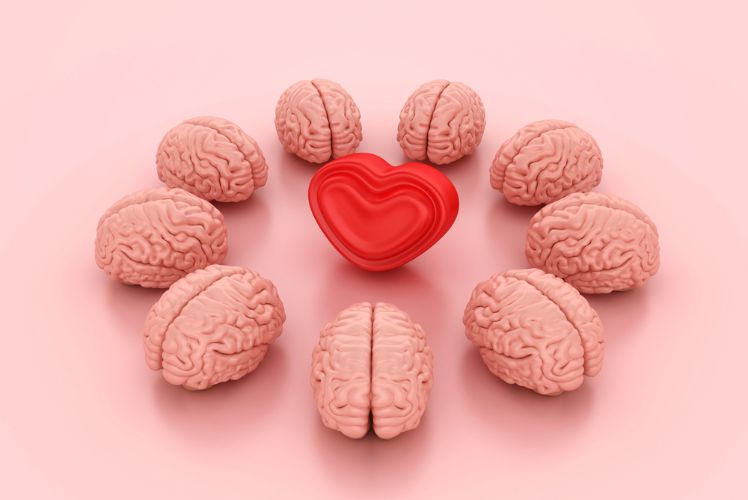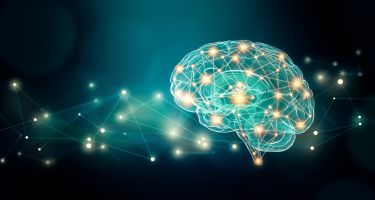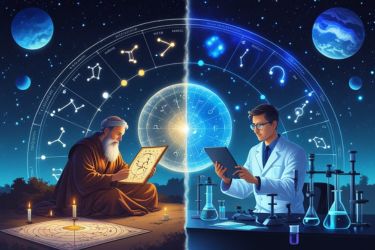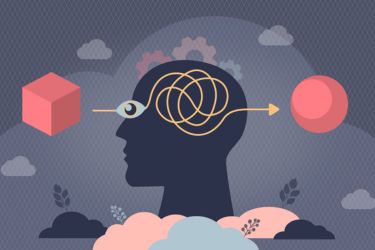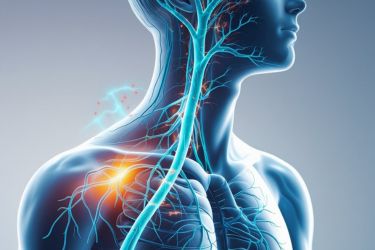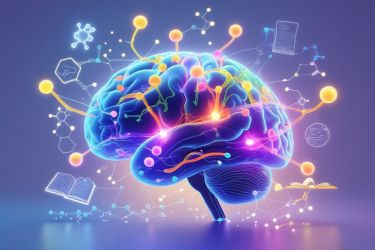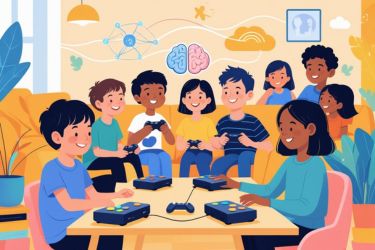When we experience the thrill of falling in love, our brains undergo significant changes. These changes are driven by a complex mix of neurotransmitters and hormones that influence our emotions and behaviours. Understanding what happens in our brains can provide us with insights into the powerful connection we feel towards others and why love can sometimes feel uncontrollable.
As we navigate the different phases of romantic relationships, our brain activates key regions associated with pleasure, attachment, and emotional connections. This fascinating interplay between chemistry and emotion reveals how our biological makeup influences our feelings and interactions with those we cherish. With advances in neuroscience, we are now able to explore the depths of love in ways we never could before.
Join us as we delve into the intricacies of love and uncover the science behind this profound emotion that shapes our lives in extraordinary ways.
Key Takeaways
- Our brains release neurotransmitters that create feelings of love and attachment.
- The experience of romantic love involves multiple phases, each affecting our emotions differently.
- Scientific research continues to reveal the biological and psychological factors influencing love.
Chemical Basis of Love
The experience of falling in love involves a complex interplay of various chemicals in our brains. Understanding these chemicals helps us see how they influence our feelings of attachment, trust, and emotional connection.
Role of Neurotransmitters
Neurotransmitters are essential for creating feelings of pleasure and motivation when we fall in love. Dopamine plays a crucial role in our brain's reward system, giving us feelings of enjoyment when we are around someone we love. This neurotransmitter drives our desire to seek out connection and reinforces behaviours that bring us joy.
Serotonin levels also change significantly during the early stages of love. Often, we experience lower serotonin availability, which can lead to obsessive thoughts about our partner. This state of mind indicates that we are highly engaged with this person, often leading to strong emotional bonds.
Norepinephrine can create feelings of excitement and affection. It is responsible for the physical symptoms of love, like increased heart rate and butterflies in our stomach. Together, these neurotransmitters shape our emotional experience during the early phases of romance.
Hormones Involved in Attachment and Bonding
Hormones are key players in the emotional landscape of love. Oxytocin is often referred to as the "love hormone". It is released during moments of intimacy, such as hugging or cuddling, and promotes feelings of attachment and trust. This hormone strengthens the bond between partners and encourages deeper connections.
Vasopressin is another important hormone linked to long-term commitment. It plays a role in fostering monogamous behaviour and encourages loyalty. The combined effects of oxytocin and vasopressin lead to profound emotional bonding and attachment, essential for lasting relationships.
Additionally, the release of endorphins contributes to feelings of calm and well-being. These hormones create a sense of happiness and security, essential components for a stable relationship. Together, these chemical signals form the foundation of our emotional connections in love.
Brain in Love: Key Regions Involved
When we fall in love, several key brain regions work together to create the feelings and responses associated with romance. Our understanding of these areas sheds light on how love affects our thoughts and behaviours. Let’s delve into the primary regions involved.
Ventral Tegmental Area (VTA) and Reward System
The ventral tegmental area (VTA) plays a crucial role in our brain's reward system. It is activated when we experience pleasure or reward, especially in the context of romantic love.
When we fall for someone, this area releases dopamine, a neurotransmitter linked to feelings of happiness and motivation. High dopamine levels can create a sense of euphoria that resembles the effects of addictive substances.
Studies using fMRI technology show increased neural activity in the VTA when people think about their loved ones. This response reinforces our desire to seek out and maintain romantic connections.
Prefrontal Cortex and Decision-Making
The prefrontal cortex is involved in critical thinking, judgement, and decision-making. In the context of love, it helps us evaluate our feelings and the social implications of our relationships.
While we might feel intense emotions, this region aids in regulating those feelings, helping us make rational choices about love. For example, it can assess the risks and rewards associated with forming deep connections.
Interestingly, during the early stages of love, activity in the prefrontal cortex may decrease, leading to irrational behaviour or decisions. This highlights how love can sometimes cloud our judgement, leading us to prioritise feelings over logic.
Amygdala and Emotional Processing
The amygdala is essential for processing emotions, especially fear and pleasure. It helps us respond to emotional stimuli and can heighten our sensitivity during romantic experiences.
When we develop feelings for someone, our amygdala can trigger strong emotional reactions, making us more aware of interpersonal dynamics. This heightened sensitivity helps us to bond with our partner.
Additionally, the amygdala is involved in emotional regulation. When we feel hurt or scared in love, it helps us navigate those feelings, contributing to our emotional stability during relationships.
Nucleus Accumbens and Pleasure
The nucleus accumbens is another central player in the brain's reward system. It receives signals from the VTA and is crucial for our experience of pleasure. In romantic scenarios, this area enhances feelings of happiness and satisfaction.
When we share joyful moments with someone we love, the nucleus accumbens releases more dopamine. This release encourages us to pursue enjoyable experiences with that person, reinforcing feelings of connection.
In essence, the nucleus accumbens plays a vital role in making love a rewarding experience. Our brain’s ability to link emotional pleasure with our partners solidifies the bonds we form.
Phases of Romantic Relationships
Romantic relationships typically unfold in three key phases. Each phase has unique features that shape our feelings, behaviours, and connections. Understanding these stages helps us navigate the complexities of love and attachment.
Attraction and Infatuation
In the attraction phase, we often experience a surge of passion. This is the initial spark where physical attraction plays a significant role. Our brain releases chemicals like dopamine and norepinephrine, creating feelings of excitement and euphoria.
During this time, we might feel an intense desire to be near the other person. Infatuation can lead to obsessive thoughts, causing us to idealise our partner. This phase is marked by the thrill of falling in love, where everything feels new and exhilarating.
Emotional Attachment
As we move into the emotional attachment phase, we start forming deeper emotional bonds. Oxytocin, often called the "love hormone," becomes more prevalent during physical intimacy and emotional sharing. This hormone helps strengthen our connection and foster trust.
We begin to rely on each other for support, creating a sense of security. In this phase, our relationship may shift towards a more stable and comforting aspect. The feelings of romance deepen, and we often seek to build a monogamous relationship.
Long-Term Bonding
In the long-term bonding phase, commitment is key. Relationship dynamics can change as passion evolves, but emotional intimacy deepens. Couples often share responsibilities and experiences, further enhancing their social bonding.
Love becomes more enduring, built on shared values and experiences. This phase requires ongoing effort to maintain the connection despite life's challenges. We learn to navigate conflicts together, reinforcing our commitment to each other. The relationship transitions from intense passion to a profound sense of partnership and companionship.
Psychological and Social Factors

Our experiences in love are deeply influenced by both psychological and social factors. Emotional security and the context in which we form relationships play crucial roles in shaping our feelings and behaviours.
Importance of Emotional Security
Emotional security is vital for healthy romantic relationships. When we feel secure, we are more likely to trust our partner and open up to them. This trust fosters well-being, reducing anxiety and promoting emotional health.
A lack of emotional security can lead to feelings of vulnerability, which may increase the risk of social rejection. Individuals who have experienced heartbreak or trauma may find it challenging to build trust.
When we work on developing emotional security, we enhance our overall romance quality. This can lead to stable connections that support our mental health and resilience against depression or anxiety.
Impact of Social Context on Love
The social environment significantly affects our romantic feelings. Factors like peer influence and cultural norms shape how we perceive and engage in relationships.
For instance, witnessing healthy relationships can foster optimism and motivate us to seek similar connections. Conversely, exposure to negative relationship models may heighten our fears of failure and disappointment.
Social acceptance is another critical element. When our romantic choices align with societal expectations, we often experience enhanced emotional well-being. On the other hand, facing social backlash for our choices may lead to stress and anxiety, negatively impacting relationship health.
In this way, understanding the social context helps us navigate our romantic lives and boosts our overall emotional resilience.
The Hormonal Influence
When we explore what happens in our brains during love, hormones play a crucial role. They influence how we feel attraction, experience affection, and navigate romantic challenges. Understanding these hormones can help us appreciate the complex nature of love.
Testosterone and Estrogen in Attraction
Testosterone and estrogen are key hormones that affect our attraction to others. Testosterone is often associated with lust. It drives our sex drive and can increase desire during the early stages of a relationship. Higher levels of testosterone can lead to increased confidence and a stronger desire to seek out potential partners.
Estrogen also plays a vital role, especially in women. It is linked to the feelings of bonding and affection. Higher estrogen levels can enhance emotional sensitivity, which helps us connect with our partners. This hormone promotes nurturing behaviours, strengthening emotional ties.
When both hormones are balanced, individuals often experience heightened attraction, making it easier to form romantic connections.
Stress Hormones and Romantic Challenges
Stress hormones like cortisol and adrenaline can significantly impact our romantic lives. When we face challenges in our relationships, cortisol levels tend to rise. This can lead to feelings of anxiety and emotional pain, which may act as a barrier to intimacy.
Adrenaline, associated with excitement, can also emerge during romantic encounters. In some situations, it heightens our senses and creates a rush, often described as “butterflies in the stomach.” This can make relationships feel more thrilling but can also lead to heightened stress during conflicts.
Managing these stress hormones can lead to healthier relationships. Understanding the balance between bonding and stress can guide us through the ups and downs of love.
The Role of Genetics in Love
Genetics plays a significant role in how we experience love, attraction, and relationships. Our genetic makeup can influence not only whom we are drawn to but also our ability to form lasting bonds. Understanding these genetic factors helps us explore the complex science of love.
Genetic Compatibility and Attraction
Genetic compatibility can affect who we find attractive. Research shows that we are often drawn to partners with different immune system genes. This diversity can lead to healthier offspring. Major Histocompatibility Complex (MHC) genes are key players in this process, influencing our scent and attraction.
When we meet someone, our brain subconsciously evaluates their genetic makeup. This can lead to a stronger attraction that feels almost instinctual. For example, studies indicate that individuals often prefer the scent of potential partners whose MHC genes are different from their own. This phenomenon reveals how deeply our genetics can shape romantic preferences, impacting the formation of long-term relationships.
Genetic Influences on Attachment Styles
Our genetics also play a role in how we connect with others. Research indicates that genetic factors can influence our attachment styles, which dictate how we form bonds in relationships. For instance, individuals with certain genetic variations may be predisposed to secure or insecure attachment styles.
This genetic influence affects how we handle intimacy, trust, and dependency in relationships. Securely attached individuals feel comfortable with closeness and tend to have healthier, more stable relationships. In contrast, those with insecure attachment may struggle with commitment or be overly clingy. By recognising these patterns, we can better understand our behaviours in romantic love and improve our relationships, fostering stronger bonds.
Scientific Research and Love
We can explore how our brains react when we fall in love through scientific studies. Techniques like brain scans and hormone analysis provide fascinating insights. These studies reveal the intricate relationship between our biology and the feelings of love.
Insights from fMRI Studies
Functional magnetic resonance imaging (fMRI) studies have significantly advanced our understanding of love. These brain scans allow us to observe which areas of the brain become active when we experience romantic feelings. One key discovery is that the reward circuit in the brain, including the ventral tegmental area, lights up during intense attraction.
Helen Fisher, a prominent researcher in this field, indicates that love engages several neurotransmitters like dopamine and oxytocin. Dopamine, often linked to pleasure, creates feelings of happiness and elation. Oxytocin, known as the "love hormone," promotes bonding and trust. Through fMRI, we can see these chemicals’ influence on our emotional responses and the overall experience of love.
Understandings from Hormone Analysis
Hormone analysis helps us grasp the biochemical processes driving our romantic feelings. Love triggers specific hormones that play a crucial role in our emotional connections. For example, increased levels of oxytocin are often found in individuals who are deeply in love.
Research shows that these hormones can lead to stronger attachments and intimacy. Other hormones, like adrenaline and cortisol, may explain feelings of excitement and anxiety when falling in love. By analysing hormonal changes during different stages of a relationship, we can better understand the physiological effects of love on our bodies and minds. This reveals how complex and beautiful the science of love truly is.
Frequently Asked Questions
Falling in love triggers several physiological changes and involves various neurotransmitters. Our brain processes are complex, influencing both our emotions and behaviour. Below, we address some common questions about the science behind love.
What physiological changes occur in the brain during the experience of falling in love?
When we fall in love, our brain experiences heightened activity in certain areas. The ventral tegmental area (VTA) becomes more active, which is linked to pleasure and reward. This activation can lead to increased feelings of happiness and euphoria.
Which neurotransmitters are predominantly involved in the sensation of being in love?
Several neurotransmitters play key roles in the sensation of love. Dopamine is often associated with pleasure and reward, while oxytocin, known as the "bonding hormone," strengthens emotional connections. Serotonin levels may also fluctuate, affecting mood and feelings of attraction.
How does the brain differentiate between feelings of love and hate?
The brain uses different pathways to process love and hate. While love activates areas responsible for pleasure, hate engages regions related to fear and aggression. This distinction helps us understand why love can be both fulfilling and, at times, painful.
Are there any negative psychological implications associated with intense emotional attachments?
Intense emotional attachments can lead to anxiety and dependency. When we become overly reliant on a partner for our happiness, it may result in feelings of insecurity. These experiences can create stress and may even impact our overall mental health.
What impact does seeing a beloved person have on one's cerebral processes?
Seeing someone we love can trigger an increase in dopamine. This surge can create feelings of excitement and joy. Additionally, it reinforces the emotional connection and deepens our bond, leading to a cycle of positive reinforcement.
How does romantic attachment influence mental health and well-being?
Romantic attachment often has a positive influence on mental health. Healthy relationships can provide emotional support and stability. However, unhealthy attachments may lead to stress and emotional turmoil, highlighting the importance of balance in our romantic lives.

